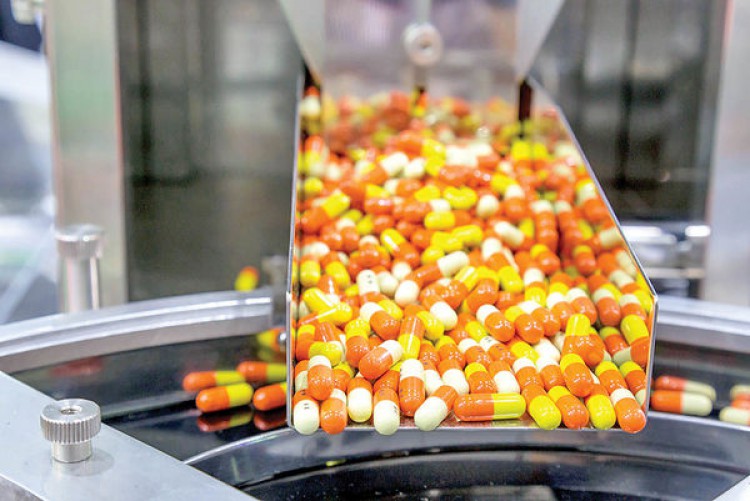The largest global drug market is the United States and Europe, followed by Japan, Canada and Australia, followed by middle-income countries such as Brazil, India, Russia, Colombia and Egypt. By 2030, the US-based pharmaceutical markets (with sales of about $ 628 billion) and Europe will continue to lead the pharmaceutical economy. The United States also produces large quantities of new chemicals or biologicals each year. Between 2014 and 2018, American companies introduced a total of 125 new chemical or biological substances, and in the same period, European countries produced approximately 70 new active substances. The global drug market growth forecast shows that by 2030, the global pharmaceutical market will see 160% growth, with India having the highest growth forecast at 232%. The three largest pharmaceutical companies in the world are Johnson & Johnson, Pfizer and Roche.
In our country, this industry has a lot of potential.
The growth and development of the pharmaceutical industry in the country depends on the gradual liberalization of prices along with the relative and non-interventionist support of the domestic pharmaceutical industry as well as increasing the competitiveness of domestic companies. Implementing such a process reduces drug smuggling into the country, prevents the smuggling of subsidized drugs abroad, and prevents the outflow of limited resources. Compared to other industries, the pharmaceutical industry is a leading industry, because both the industry is very old and "high-tech" products are produced in Iran. As Iran is not a member of the World Trade Organization, many of the restrictions on member companies are not met in the case of Iran; It is sometimes heard that Iran is the world's second largest producer of a particular drug because it faces restrictions in the World Trade Organization and international treaties, and because Iran is not a member of this organization and treaties, it produces it.
Therefore, this factor creates a competitive advantage for our country and can also create a competitive advantage for exports. Currently, 64 Iranian national projects have been defined in the field of completing the value chain, which according to forecasts can inject about one thousand and 100 million dollars of added value into the country's economy in the next five years and create jobs for 1,500 people. The pharmaceutical industry is one of the few industries that has been able to have a launching pad in the conditions of sanctions and is one of the seven countries in this field. From this perspective, it is considered an emerging power in the world. There are 500 licensed companies in this field, of which 344 are knowledge-based companies. About 40 of the companies active in the stock exchange are pharmaceutical companies and investment companies in the pharmaceutical industry, of which about 34 are pharmaceutical companies and 6 companies are specialized in the field of specialized investment in the pharmaceutical industry.
About 66% of the country's pharmaceutical industry is owned by three holdings; The Social Security Organization (Shasta) is the executive headquarters of Farman Imam and the National Development Group (Webbank).
Drug production is within 9% and only 4% of these drugs are imported. In terms of market value, 55% of the market value belongs to domestic producers and 45% of it belongs to the import market value. The high rate of drug consumption in our country makes Iran the second largest per capita consumer in Asia and the twentieth in the world, the per capita drug consumption in the country is about $ 63. Also, the average number of drugs prescribed by doctors internationally is 2 units, while in Iran it is estimated at 3.5 units. The active ingredient of this industry is 40% domestically produced and 60% imported. The development of the pharmaceutical industry is one of the indicators of the development of countries. Therefore, today, every country in the world seeks to develop its pharmaceutical markets, and Iran, especially in recent years, has targeted the development of its pharmaceutical market. In Iran, more than 150 pharmaceutical companies are active in the field of production of ready-to-use drugs and about 75 companies are active in the field of production of active ingredients and drug packaging. The workforce in these industries is directly 25,000 and indirectly in distribution companies, pharmacies and support companies more than 100,000.
Iran's share of the world pharmaceutical market in 1398 was equivalent to one billion and 100 million dollars for drug imports, 33 million dollars for dry milk and 27 million dollars for pharmaceutical supplies, which totals about 2 billion and 441 million dollars. Also in Iran, the ratio of total health sector expenditures to the country's gross domestic product (GDP) in 2019 was about 8.7 percent and 14 percent of these expenditures were allocated to medicine, which is equal to the global average.
Biopharmaceutical products in the world and in the country
Biological products are often designed for targeted drug delivery. for example; Biological drugs in the treatment of cancer have fewer side effects and more therapeutic effects than most traditional drugs used for chemotherapy. Also, these products have many applications in the field of diagnosis, treatment and research, and among their most important therapeutic applications, we can mention the following: treatment of various cancers, treatment of autoimmune diseases such as: inflammation, treatment of hormonal disorders, infertility and blood products. In the world today, biological medicinal products have attracted the attention of many governments and investors due to their strategic position and great added value. In 2013, the global market value of organic products was reported to be more than $ 6.200 billion, and in 2019 it was worth $ 7.387 billion.

